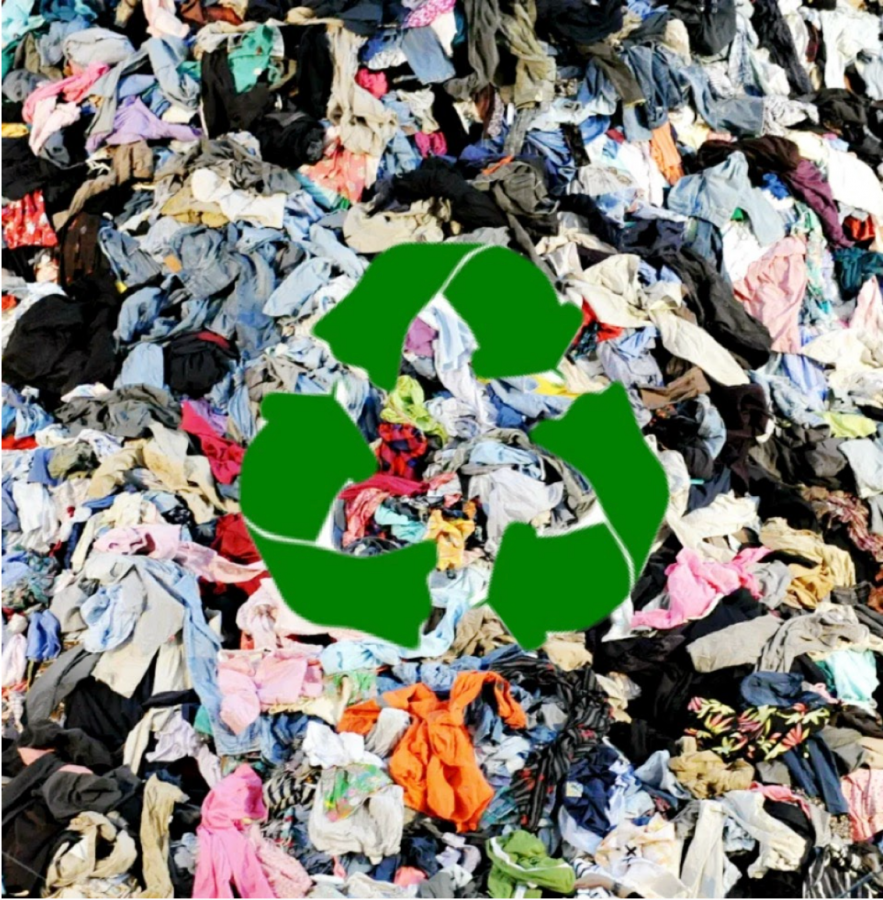The Rise of “Sustainable” Fashion
December 8, 2020
Take a gander into your closet. What are you met with? Certainly pants, shirts, coats, maybe shoes. These are the obvious staples of your wardrobe. The stars. Your pieces. But have you ever taken a moment, just a moment, to conceptualize where your forty dollar jeans are really coming from? I’m sure the very implication of forced child labor has crossed all of our minds when buying that five dollar shirt. We are all aware that cheap fashion does not come from a place of decently treated and well-paid workers. However, more recently, the humanitarian issue has been discussed frequently among social media users. Thus, our motivation to begin shopping more ethically has, at the very least, increased slightly. And even with this small demand, small business owners have taken the opportunity to create sustainable clothing companies focused on designing almost zero waste textiles that match their own creative abilities. How did sustainable fashion even begin? And why is society so interested in it?
Sustainable fashion is not a new feat. Ever since mass manufacturing became readily available — around the middle of the twentieth century — people began protesting the unethical production of clothing. Fast forward almost fifty years, when we have access to over hundreds of brands claiming to be sustainable. Now, there is a new issue. The term “sustainable” is completely relative to different brands. Even the official Merriam Webster definition for “sustainable” is vague: “of, relating to, or being a method of harvesting or using a resource so that the resource is not depleted or permanently damaged.” The so called “methods” being referred to can vary drastically. Just because a company claims to be sustainable does not mean they are anywhere near zero waste. The businesses may just pay their workers a livable wage and can therefore claim “sustainability”. And, yes, there are many brands whose sustainability claims are actually accurate. But, as customers, it’s hard to tell.
Unfortunately, part of the issue surrounding sustainable, “ethical” fashion is the steep prices that accompany them. You can rarely find any zero-waste fashion pieces under one hundred dollars, as tank top prices can even reach triple digits. This pricing problem makes it extremely difficult for lower income workers to buy ethically. To make matters worse, a recent trend has developed in the social media community that shames others for buying from fast fashion companies. The trend has adopted the drawn-out phrase “its the child labor for me.” While calling out others for supporting fast fashion may be helpful in concept, everyone faces a different financial situation and truly may not be able to afford to exclusively shop form zero waste and “sustainable” companies. Although thrifting is an ethical alternative, due to the rising popularity of thrifting for re-selling purposes, those in low-income areas may have limited options when they shop. Thus, in this way, we are at quite a loss.
To replace your entire wardrobe with ethically made pieces is unrealistic for most. The combined costs of providing workers with livable wages, buying eco-friendly fabric, zero waste shipping materials, and finding ways to recycle scraps all cause these steep clothing prices. If interested in helping the sustainable fashion movement, through uses of activism, pressuring larger corporations to adopt more eco-friendly manufacturing processes seems like the most effective strategy. Additionally, those concerned about thrift store gentrification can go to higher income areas or use online thrifting websites.
The rise of sustainable fashion companies has spread awareness, inspiring others to create their own brands, advocate for the depletion of fast fashion, and handmade clothing production has skyrocketed. Hopefully, this movement will spark a lasting impact.








Mr. Dietzler • Dec 8, 2020 at 10:14 am
Excellent article – An honest look into the skeletons in our closets, and also acknowledging the financial barrier to many in ethical clothing purchases. Reminds me of a similar barrier that exists in sustainably produced foods that are organic and far healthier but also far more expensive.